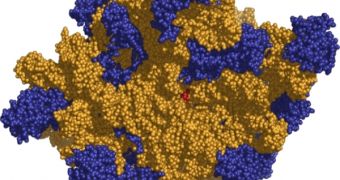Obtaining real molecules in an artificial environment has been a long-time dream for biology engineers, and one that was not short on difficulties that had to be surpassed to achieve it. But now, scientists at the Scripps Research Institute, in La Jolla, California, managed to create such a molecule, a tiny fragment of RNA, which has the most important property of life – self-replication. Future plans include the endowment of the engineered material with the means to evolve and function, which would basically be the first steps toward creating artificial life.
"Obviously what we're trying to do is make a biology," says Scripps biochemist Gerald Joyce. "We're trying to jump in at the last signpost we have back there in the early history of life."
The chemical he and colleague Tracey Lincoln created was based on RNA because evolution theorists believe that this acid was the thing that formed the condition for the appearance of intelligent life on Earth. A major advantage that RNA has over DNA is the fact that it can catalyst chemical reactions, the kind that happen in our bodies thousands of times each second. And it's all made possible by these small elements.
The way they obtained their chemical was by forcing RNA building blocks to mutate under observation, leaving them with more than 288 possible outcomes. By applying Darwin's theory on the survival of the fittest on a microscopic level, the researchers then selected only those fragments that proved they could successfully replicate even in the harshest competitive environment.
However, the team urges people not to think that the chemical is alive yet. They say that, in order for that to happen, it has to mutate on its own and develop new abilities, without them being introduced in its sequencing artificially. But Joyce says that the obtained molecule has already been endowed with another property, though he will not mention it until the team publishes its results.

 14 DAY TRIAL //
14 DAY TRIAL //